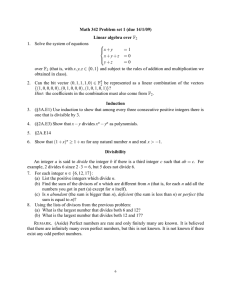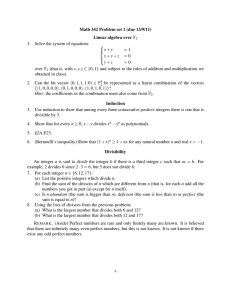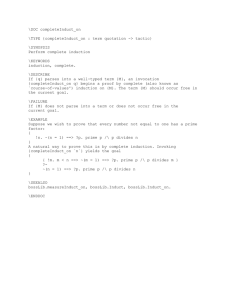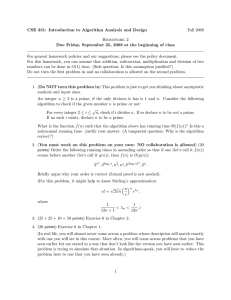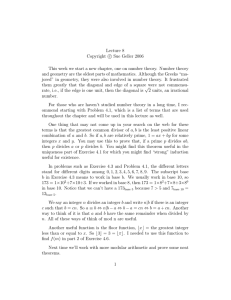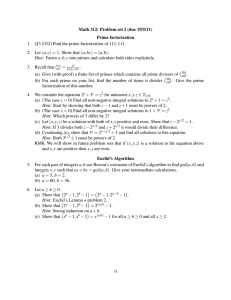Math 312: Problem set 1 (due 13/5/11)
advertisement
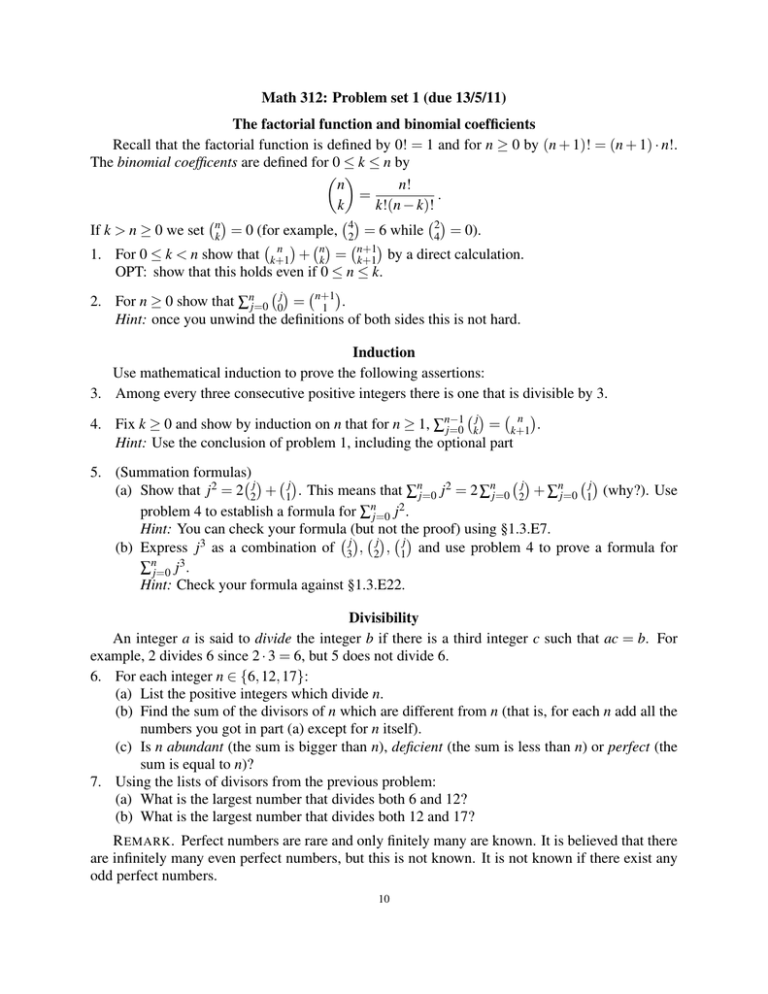
Math 312: Problem set 1 (due 13/5/11)
The factorial function and binomial coefficients
Recall that the factorial function is defined by 0! = 1 and for n ≥ 0 by (n + 1)! = (n + 1) · n!.
The binomial coefficents are defined for 0 ≤ k ≤ n by
n!
n
.
=
k!(n − k)!
k
If k > n ≥ 0 we set nk = 0 (for example, 42 = 6 while 24 = 0).
n 1. For 0 ≤ k < n show that k+1
+ nk = n+1
k+1 by a direct calculation.
OPT: show that this holds even if 0 ≤ n ≤ k.
2. For n ≥ 0 show that ∑nj=0 0j = n+1
1 .
Hint: once you unwind the definitions of both sides this is not hard.
Induction
Use mathematical induction to prove the following assertions:
3. Among every three consecutive positive integers there is one that is divisible by 3.
j
n 4. Fix k ≥ 0 and show by induction on n that for n ≥ 1, ∑n−1
j=0 k = k+1 .
Hint: Use the conclusion of problem 1, including the optional part
5. (Summation formulas) (a) Show that j2 = 2 2j + 1j . This means that ∑nj=0 j2 = 2 ∑nj=0 2j + ∑nj=0 1j (why?). Use
problem 4 to establish a formula for ∑nj=0 j2 .
Hint: You can check your formula (but
not the proof) using §1.3.E7.
j j j
3
(b) Express j as a combination of 3 , 2 , 1 and use problem 4 to prove a formula for
∑nj=0 j3 .
Hint: Check your formula against §1.3.E22.
Divisibility
An integer a is said to divide the integer b if there is a third integer c such that ac = b. For
example, 2 divides 6 since 2 · 3 = 6, but 5 does not divide 6.
6. For each integer n ∈ {6, 12, 17}:
(a) List the positive integers which divide n.
(b) Find the sum of the divisors of n which are different from n (that is, for each n add all the
numbers you got in part (a) except for n itself).
(c) Is n abundant (the sum is bigger than n), deficient (the sum is less than n) or perfect (the
sum is equal to n)?
7. Using the lists of divisors from the previous problem:
(a) What is the largest number that divides both 6 and 12?
(b) What is the largest number that divides both 12 and 17?
R EMARK . Perfect numbers are rare and only finitely many are known. It is believed that there
are infinitely many even perfect numbers, but this is not known. It is not known if there exist any
odd perfect numbers.
10
Factorials and primes
8. For 2 ≤ j ≤ n. Show that n! + j is not prime. Conclude that there are arbitrarily large gaps
between consecutive primes.
9. For which prime numbers p is p + 1 also prime?
R EMARK . It is believed (the “twin prime conjecture”) that there are infinitely many primes p
for which p + 2 is also prime.
11

